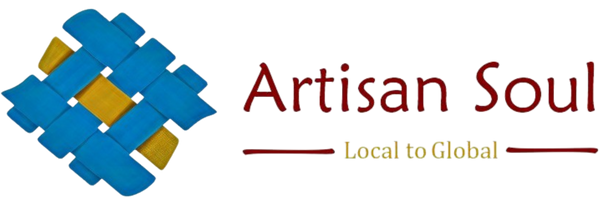
What Makes Dhokra Metal Craft So Remarkably Unique?
Share
Dhokra Metal Craft - Dariyapur, Burdwan
Dhokra or Dokra is an art of making metal figurines. Dhokra art making involves casting of non–ferrous metal such as bronze and copper based alloys using the lost-wax casting technique. This type of metal casting technique has been used in India for over 4,000 years. One of the earliest known wax artefact is the dancing girl of Mohenjo-Daro. There are several processes involved in the making of Dhokra art and hence, a single piece could take over a month to be created.

Dhokra Artisan tribes are spread in limited numbers in Jharkhand, West Bengal, Chhatisgarh, Andhra Pradesh & Orissa. In West Bengal, Dhokra Artisans are from a community known as 'Karmakar' which means metal workers. Dhokra in West Bengal is primarily produced in two hubs i.e. Dariyapur and Bikna.
Dariyapur village, located in Bardhaman district, is known for its Dhokra artisans. The Artisans families had migrated to this village about 120 years back from Odisha. At present, 133 artisans from Dariyapur practise Dhokra craft asan occupation.
Bikna is a village in Bankura district of West Bengal. The history of the Dhokra artists in Bikna is about 150 years old. A group of craftspeople at that time migrated from the Chotanagpur plateau region and settled in Rampur beside Bankura. Presently 163 craftspeople in 58 families are associated with this ancient tradition.
In the Odisha region, the tribal families of Sadeibareni produce Dhokra art. Odisha art and culture is known for its richness. Odisha handicraft products are especially renowned. In the Bastar district of Chhattisgarh, unique Dhokra handicrafts are also created. The Dhokra crafts from Bastar region are so renowned that they even have their own category of art, known as Bastar Dhokra Art.
Dhokra art depicts Power of Emotional & Spiritual Value. The products of Dhokra artisans are in great demand in domestic and foreign markets because of the primitive simplicity, enchanting folk motifs and forceful form. Dhokra horses, elephants, peacocks, owls, religious images, measuring bowls and lamp caskets are appreciated. The lost wax technique for casting of copper based alloys has also been found in China, Egypt, Malaysia, Nigeria, Central America, and other places.
The Process of Making Dhokra Art
Before any Artisan sits to make the figure, he prays for guidance from Tristram (Son of Lord Vishwakarma), said to be an expert in metal alloys.
Firstly, a core, slightly smaller than the desired artefact, is created using clay. It is left to dry in the sun and then given a coat of wax that is the desired thickness of the artefact. The way layer is then coated in a thin layer of clay and all of the design intricacies are carved onto this clay layer. After this clay layer dries, numerous clay layers are subsequently added and dried till the mould is hard and thick enough. It is then heated in order for the wax layer to melt.

Once the wax has been drained off, the molten metal is poured into the cavity through multiple channels and left to take the shape of the clay mould. When the metal has cooled off and dried, the clay mould is broken into two or three equal pieces and the metal artefact is revealed. Because the mould is broken, no two Dhokra art pieces can ever look the same.
The final step in the process is applying patina to the metal object. This process enhances the surface through the application of selected colours. A final coat of wax is applied to enhance and preserve the patina.
Survival of Dhokra Art
This beautiful artwork is facing a decline in recent years. The steady increase in the cost of raw material makes the end product expensive to attract buyers. As a result, artisans have been struggling to produce their master works. Lack of inspiration, encouragement and knowledge of new designs as well as the inability to adapt to modernization have also contributed to the decline of this artwork.
While there is still a heavy demand for these sculptures both commercially and in international markets, in cities such as Milan, Paris and London, the primitive techniques and lack of access to modern technology cause a delay in production.
Artisan Soul has decided to support this traditional Artform and Artisans by creating a platform to sell their creations.
